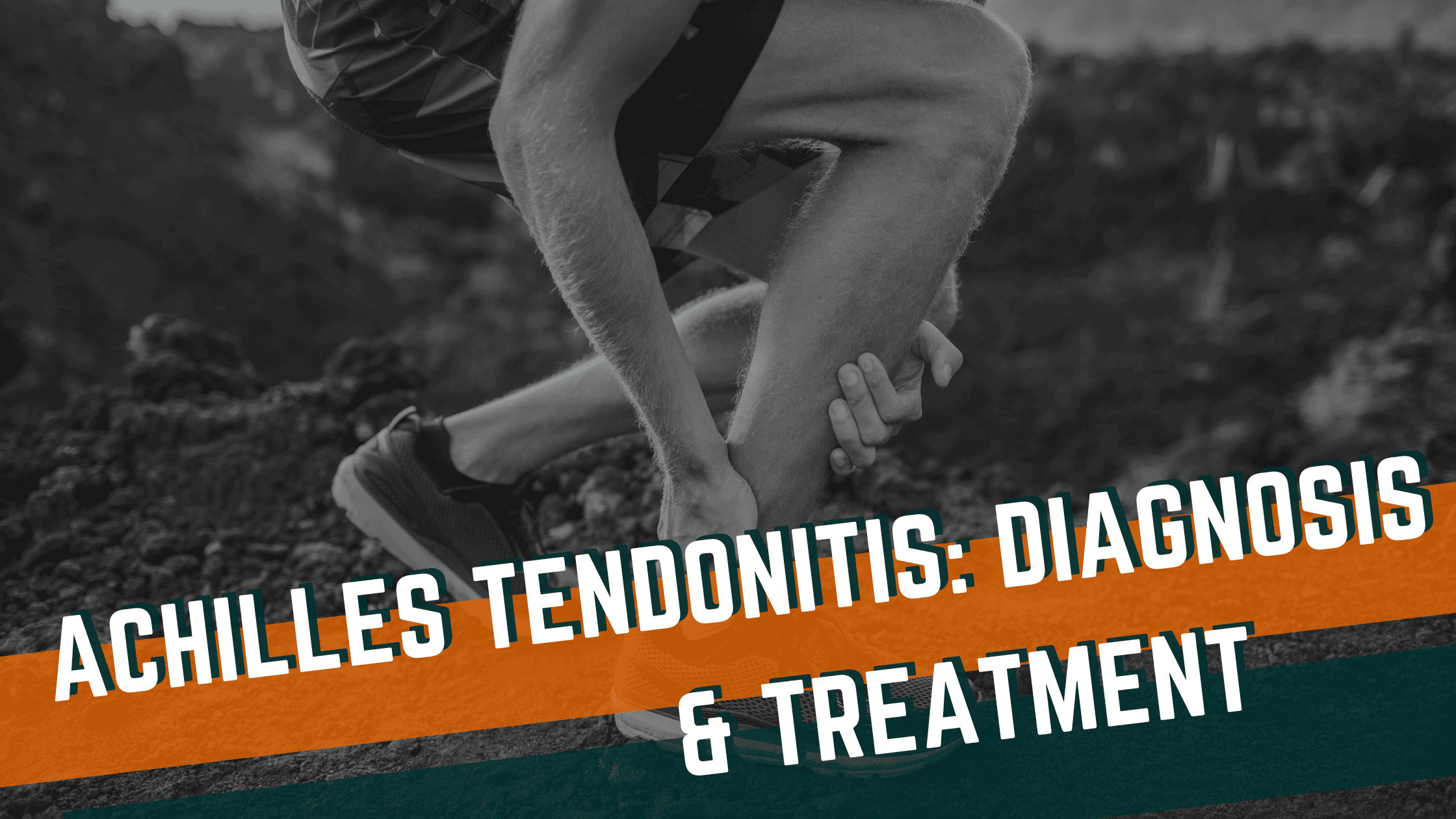
Achilles Tendonitis can be a painful condition for runners, often leading to reduced mileage or even complete rest from training. If you are sick of running with Achilles Tendonitis then this article will give you a road map to get back to full speed!
What is Achilles Tendonitis?
Achilles Tendonitis refers to a condition where the Achilles tendon becomes overloaded and painful. This results in an inflammation around the tendon and accompanies the mechanical breakdown of the tendon itself. A more appropriate term for Achilles Tendonitis is “Achilles Tendinopathy” but for the purposes of this article, we will use both terms interchangeably.
The Achilles tendon’s job is to act as a giant rubber band. As you run, your calf muscle contracts, stretching this giant band, which then results in the ankle bones it connects to moving, and you taking the next step forward.
Achilles Tendonitis occurs when that tendon gets challenged with more load or volume than it is used to, and it struggles to recover after runs. Put enough over-stressful runs into a training cycle and then the tendon becomes inflamed, disrepaired, and painful.
Diagnosing Achilles Tendonitis
Diagnosing this condition comes down to four common findings:
- Pain with loading the calf and Achilles (calf raises, running, jumping, etc.)
- This pain often warms up as you run and then will often come painful again later in runs or after runs
- Pain with palpation of the Achilles tendon (the rope-like structure connecting the calf muscles to the heel bone)
- Often, this pain follows a change in training volume
The Importance of Immediate Treatment
Addressing the early signs of Achilles Tendonitis is critical to get ahead of worsening symptoms. The longer this condition continues, and the more beat up the tendon becomes, the longer the rehab process takes.
Early interventions should include adjusting training volume, strengthening the calf muscles, and addressing sleep & nutrition deficits that impact tendon recovery.
Achilles Tendonitis Treatment & Rehab Protocols
Contrary to popular beliefs, stretching the Achilles tendon is not typically the best course of action. Achilles Tendonitis happens when the tendon isn’t strong enough to tolerate the volume of load placed on it. And stretching does not build strength.
Instead, initial Achilles Tendonitis rehab will focus on heavy, slow resistance training on the calf and Achilles tendon. Commonly, we’ll prescribe 3×8–12 Achilles eccentrics with a 3-second lower and enough load to create mild tendon discomfort. This slow tempo calf raise will be progressively increased over several weeks to build the tendon up.
The tendon also needs to be elastic, so we’ll also use various plyometric drills to restore the tendon’s springiness in later stages of the rehab process.
Physical Therapy for Achilles Tendonitis
Skilled sports physical therapists will be able to speed up your recovery process in a few ways.
First, they’ll be able to stream-line identifying the appropriate dosage of the strengthening exercises above, saving you weeks of struggling to find the right amount of loading.
Second, they’ll be able to identify any other biomechanical factors impacting your running performance to help reduce the likelihood of re-injuries and get you back on the road quicker. At Onward, we do this with treadmill gait assessments. We will analyze your running form to identify technique issues that might place excessive stress on the Achilles tendon and reduce your speed.
Return to Running with Achilles Tendonitis
The most common question runners have is when they can get back on the road. At Onward, we strive to never have you stop all running. Instead, we work to find the volume and speed work combinations that you can do without further irritating your Achilles. This might mean a slight reduction in your volume but we’ll work together to find other training modalities to continue improving your fitness.
The exact prescription will, of course, vary based on how painful each athlete’s Achilles Tendonitis is but we often use the Silbernagel model to give runner’s guidelines on running volume:
- Pain >5/10 means we should stop running
- Pain 0-2/10 is a green light. Keep going!
- Pain 3-4/10 is fine as long as symptoms aren’t still increased 24 hours later
How Can Onward Physical Therapy Help?
At Onward, helping athletes train with and rehab Achilles Tendonitis is our passion. We’ll help you dial in the perfect dose of tendon strengthening exercises while also balancing your training volume so that you can stay on the road. We’ll perform biomechanical assessments to find strategies to improve your performance and reduce the risk of re-injury.
If you are ready to get serious about rehabbing your Achilles Tendonitis and maximizing your performance, schedule an assessment today!
Recent Articles
Why Early Intervention Physical Therapy Accelerates Your Recovery

What to Expect at Your First Physical Therapy Session?

How to Choose a Physical Therapist

The Top 5 Misconceptions About Physical Therapy

The Complete Guide to Physical Therapy

